Auguste Rodin, sculptor
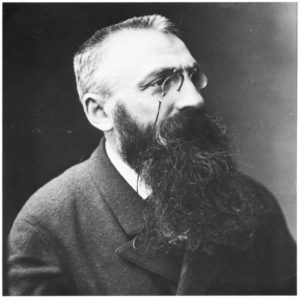
Rodin, Auguste (1840-1917). The French artist Auguste Rodin had a profound influence on 20th-century sculpture. His works are distinguished by their stunning strength and realism. Rodin refused to ignore the negative aspects of humanity, and his works confront distress and moral weakness as well as passion and beauty.
Auguste Rodin was associated with the Impressionism and Modern art
movements. Rodin’s sculptures are sources of inspiration for the Cubism
and Futurism art movements. Yet, his sculpture is also considered realistic, relying on realistic details to evoke emotion. Rodin cannot be neatly located in an "ism;" he practiced a kind of "expressionist realism."
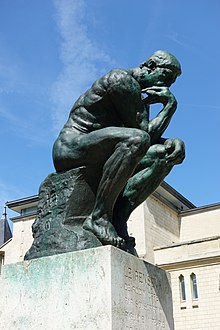
Rodin, The Thinker
Rodin - a French sculptor
Francois-Auguste-Rene Rodin was born on Nov. 12, 1840, in Paris. Auguste was born into a low-income family, his father, Jean-Baptiste, was a local police station clerk and the sole breadwinner. At the young age of 14 Auguste entered the Petite École, a school of decorative arts in Paris. He applied three times to study at the renowned École des Beaux-Arts but was rejected each time. Auguste could have been a better student; in 1858 he began to do decorative stonework in order to make his living creating decorative sculptures and later worked in construction. During his spells of menial jobs, which went on for about twenty years, Auguste made an eye-catching sculpture he titled The Man With The Broken Nose.
Four years later the death of his sister Marie so traumatized Rodin that he entered a sacred order. The father superior of the order recognized Rodin's talents and encouraged him to pursue his art. In 1864 Rodin met a seamstress named Rose Beuret. She became his life companion and was the model for many of his works. That year Rodin submitted his Man with a Broken Nose to the Paris Salon. It was rejected but later accepted under the title Portrait of a Roman.
Rodin's continued work as a craftsman brought him to live in Belgium for a few years where he accumulated sculptural work and began to get notice as an artist. During this period, in 1877, he produced The Age of Bronze, which was received with skepticism for its anatomical accuracy. He was accused of using a live model for casting; nevertheless he was recognized as a full-fledged sculptor.
In 1880 he was commissioned to create a bronze door for the future Museum of Decorative Arts. Although the work was unfinished at the time of his death, it provided the basis for some of Rodin's most influential and powerful work. In 1884 he was commissioned to create a monument that became The Burghers of Calais.
By 1900, Rodin's artistic reputation was established. Gaining exposure from a pavilion of his artwork set up near the 1900 World's Fair in Paris, he received requests to make busts of prominent people internationally, while his assistants at the atelier produced duplicates of his works. His income from portrait commissions alone totaled probably 200,000 francs a year. As Rodin's fame grew, he attracted many followers.
Rodin died on Nov. 17, 1917, and was buried at Meudon, outside Paris.
Rodin was influenced by Michelangelo
During his sojourn in Belgium, Rodin traveled in 1875 to Italy, where the works of Michelangelo made a strong impression on him. Rodin declared his encounter with the art of Michelangelo had been decisive in the formation of his style. The trip inspired his sculpture The Age of Bronze, which was exhibited at the Paris Salon in 1877. It caused a scandal because the critics could not believe that Rodin had not used a casting of a live model in creating so realistic a work. The controversy brought Rodin more fame than praise might have.
Rodin - a legacy
Could Rodin be considered the greatest sculptor of the century? His international reputation rivaled that of Michelangelo and Bernini.
Rodin's most original work departed from traditional themes of mythology and allegory.
His reputation brought students to his studio in Paris. The new generation would develop new kinds of sculpture, either influenced by Rodin or in reaction to him.
The Musée Rodin was founded in 1916 and opened in 1919 at the Hôtel Biron, where Rodin had lived, and it holds the largest Rodin collection, with more than 6,000 sculptures and 7,000 works on paper.
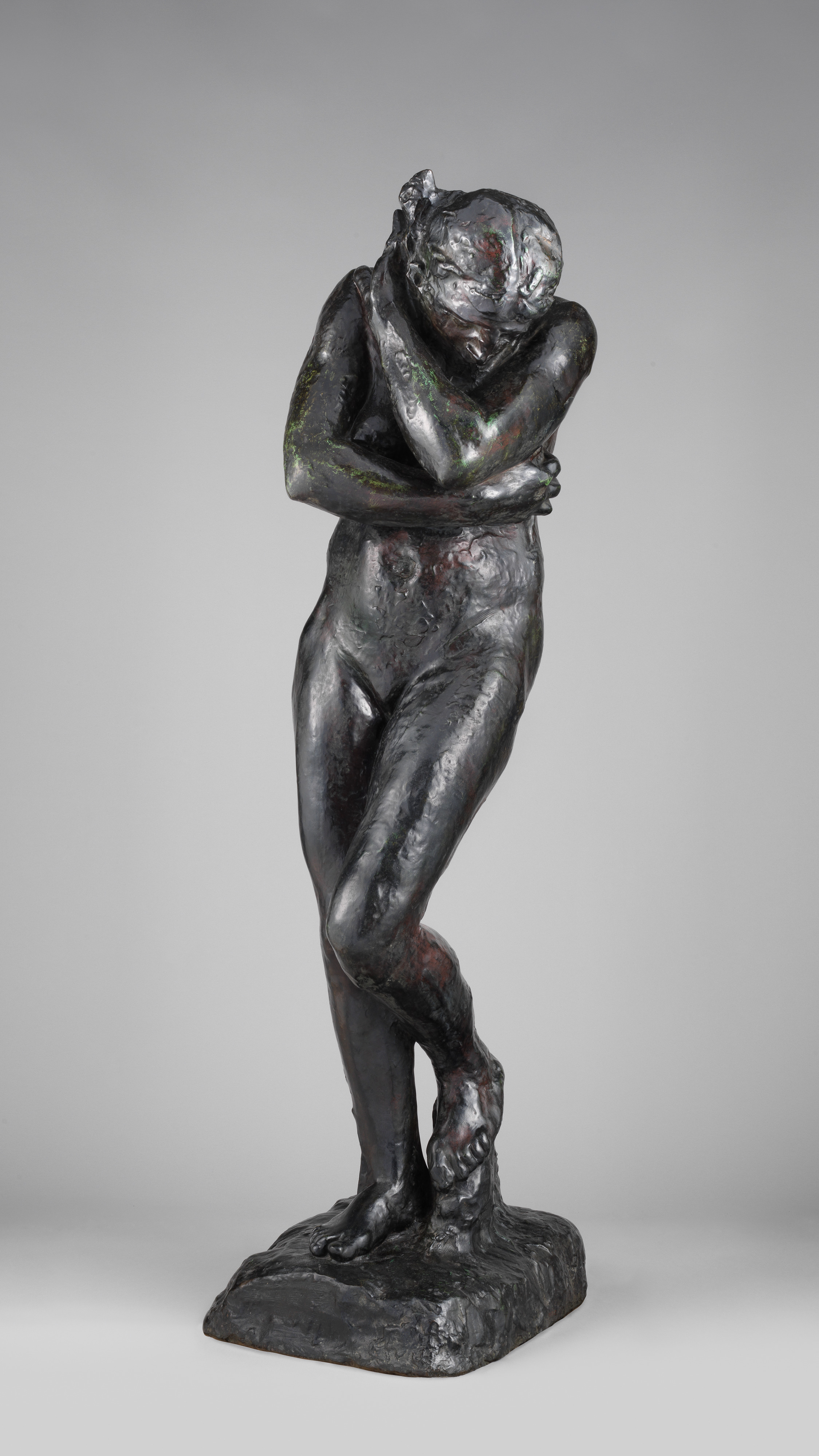 Eve Eve |
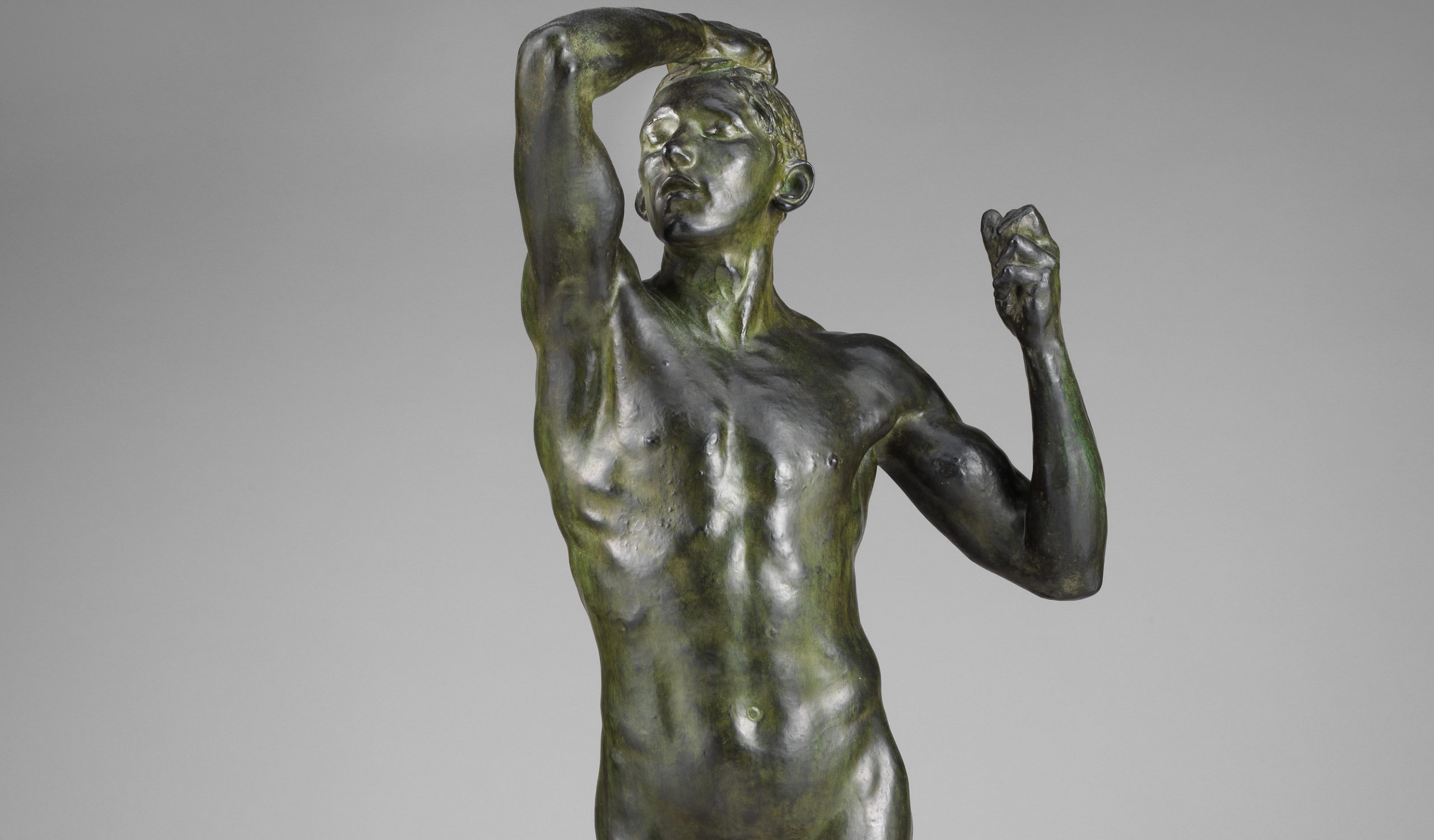 The age of bronze The age of bronzeHis statues St. John the Baptist Preaching, Eve, The Age of Bronze, and The Thinker are world famous. When Rodin was 76 years old he gave the French government the entire collection of his own works and other art objects he had acquired. They occupy the Hotel Biron in Paris as the Musée Rodin and are still placed as Rodin set them. |
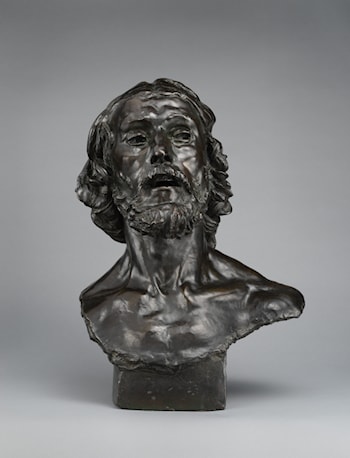 John the Baptist preaching
John the Baptist preachingRodin revealed the revealed the variety of artistic possibilities in the fragmentary, the truncated, and the incomplete.Through his and his contemporaries' work, the fragment became an established form.
Rodin's Unity and Drama
|
Auguste Rodin’s “The Burghers of Calais” is a sculpture that depicts a
pivotal event during the Hundred Years’ War. The work portrays six
prominent citizens who surrendered to the English king, Edward III,
offering their lives for their fellow residents. It was created between
1884-86 and has become one of Rodin’s most famous pieces. This sculpture title exists in several copies in various locations: Basel, Canberra, Philadelphia, Stanford, etc. |
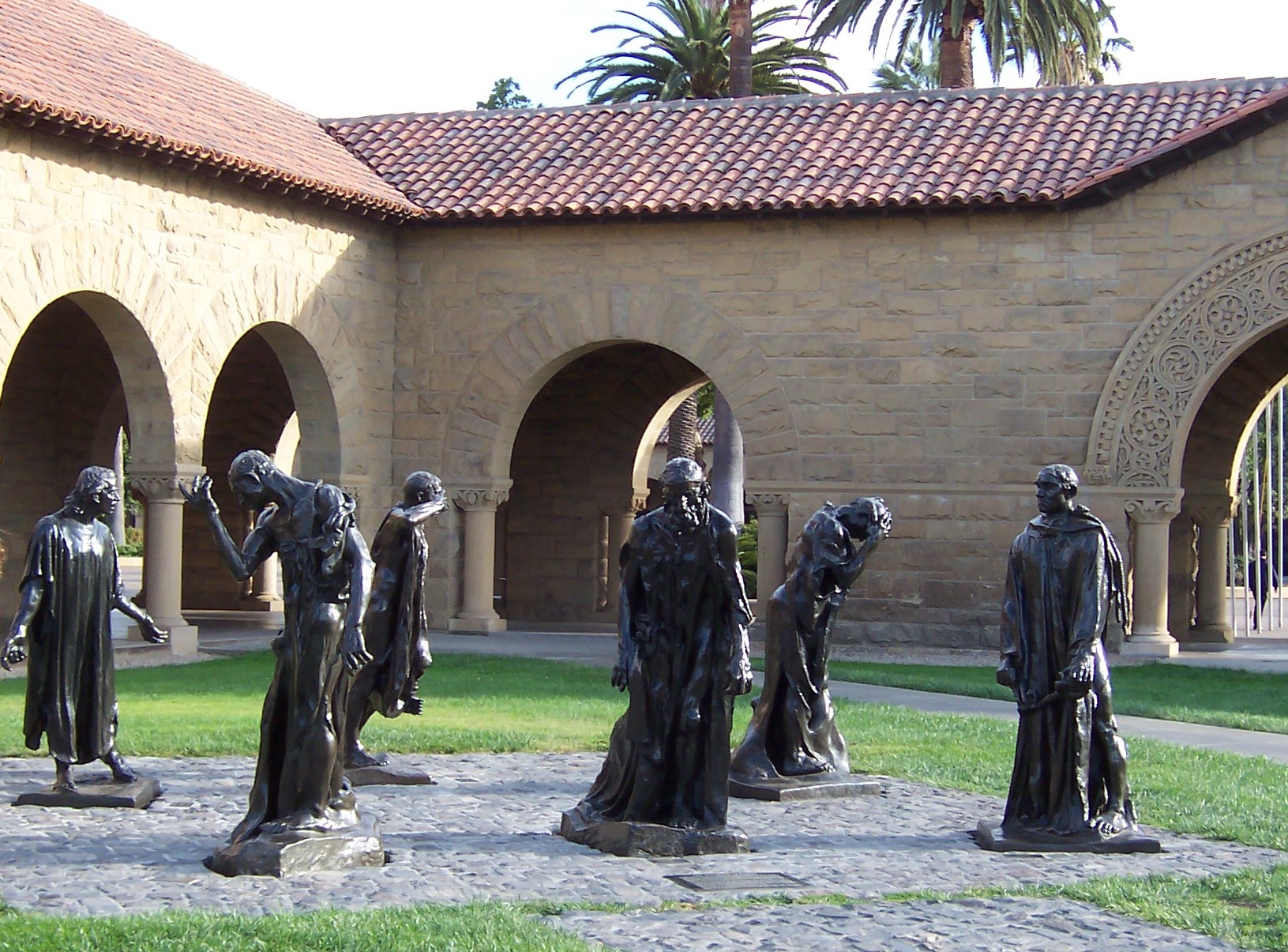 The Burghers of Calais |
The Burghers of Calais
Rodin gives St-Pierre, one of the identified figures of this episode, determination and poise. He holds the key to
the city, and around his neck is the rope, or halter, required by the
English conquerors. A companion, with his head buried in his hands, is on the
right. These two men exemplify the greatest contrast of feeling in the
group. By placing them together Rodin achieves dramatic power.
By looking at the details we see Rodin's ability to convey feeling through facial expression and through hands. He cuts the hollows of the face deeply to assure strong shadows, and his textured surfaces catch the subtle variations of light and heighten the sense of life and movement. This irregular surface is a departure from the cold, impersonal smoothness of the classical tradition. Together with a profound sense of power and drama, it had a tremendous influence on the sculptors of Rodin's time and helped to determine the trend of modern sculpture .
|
More about Rodin ... |
See also ... Burghers of Calais @ The Met Monument to the Burghers of Calais |
Okay, so now I've put on some ads from Amazon - from which I may earn a few cents. (2025)







